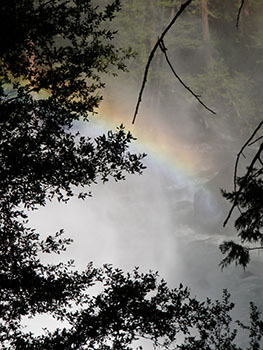Mt Langley

Mt Langley is named after Samuel Pierpont Langley, but it was most likely first climbed by the Indians. The first white man to ascend the peak was William Bellows in 1864. Mt Langley is the southernmost of all the California fourteeners, and has a great vantage point from the summit for viewing the southern Sierras. Having climbed Mt Langley three times, I consider it along with White Mountain, to be a great start for anyone eager to climb a fourteen thousand foot peak in California. At 14,042 feet, it ranks as number eleven when lined up against the other fifteen California fourteener's. Though Mt Langley can be easily accessed and climbed from the beautiful Cottonwood lakes area, the peak also sports other opportunities for very challenging climbs on the North and South facing Walls. Above, you see Mt Langley as viewed from the Owens Valley in the winter.
The trail that leads nearly to the top of Mt Langley is well maintained, and is a pleasure to hike or backpack on. I say nearly to the top, because the last 300 vertical feet is accomplished with a class 2 rock scramble.
To the left, you see backpackers traveling on the lower section of the Cottonwoods Lakes Trail. The trail is fairly level for the first few miles, but then turns upward and gains about 1,200 feet before reaching the Cottonwood Lakes and Meadows area.
You also get a nice high start on Mount Langley, because you can drive your vehicle all the way up to a 10,000 foot above sea level parking lot.
To the right you see an example of the Cottonwood Lakes Basin terrain in the summer months. In the spring months, things are beautifully green.
Having been to the top of all of California's fourteen thousand foot peaks, I have to say that Mt Langley has one of the most beautiful approaches. The meadow shown to the right is an example of one of the Sierra Nevada Mountain ranges sub-alpine meadows.
Sub-alpine meadows differ from alpine meadows in that the sub-alpine meadows are located below timberline. Approximately twelve thousand feet above sea level is the elevation of timberline (where trees no longer grow) in the southern section of the Sierra Nevada Mountains.
